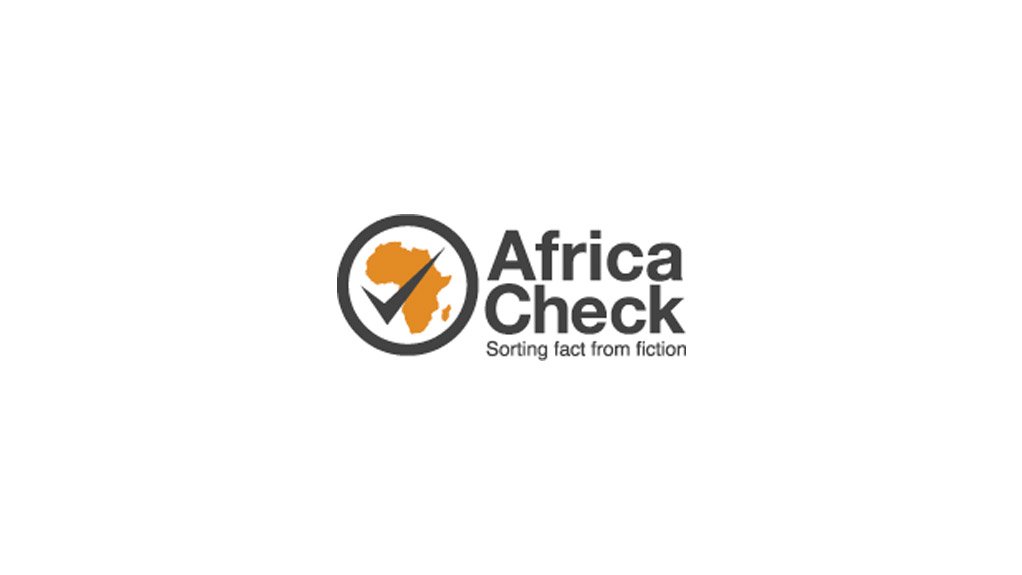In April 2025, Kenyan president William Ruto gave a media interview ahead of a high-profile tour of the Mount Kenya region, the restless political backyard of his impeached deputy, Rigathi Gachagua.
Promoted as a “development tour”, Ruto ticked off his achievements halfway into his term, including bold claims about a controversial healthcare plan funded by new taxes.
These claims also appeared in a March insert in the government newspaper, MyGov. We examined them for accuracy. (Note: Africa Check previously fact-checked economic claims by Ruto’s administration carried in the same publication.)
Ruto promised to roll out “mandatory social health insurance for all citizens” towards his end goal of universal healthcare.
He launched the Social Health Authority (SHA) in October 2024 to replace the National Hospital Insurance Fund (NHIF) as the state health insurer. SHA is responsible for paying the costs of health facilities for those enrolled in the scheme.
However, the new system has faced problems, including unclear benefits, technical failures and threats from health facilities to leave the scheme due to unpaid debts from the NHIF era. Even the government’s own scorecard admitted that SHA had “initial system challenges”.
But what do the numbers say?
8-million registered to NHIF? Data shows double
The government’s baseline number has shifted recently. A week after the scorecard was published, government spokesperson Isaac Mwaura claimed on X that “19.7-million Kenyans registered for affordable health care through SHA, up from 4-million in NHIF”.
But official records tell a different story.
In June 2024, a parliamentary inquiry was told NHIF had 16.2-million registered members, though only 7.1-million were “active” or regular contributors. This was the same figure the NHIF reported to the country’s auditor general in June 2023 and in a board exit report in November 2024.
Kenya’s 2024 economic survey also showed 16.25-million were registered by 30 June 2023, up from 9.5-million in June 2020.
All data showed that 16.25-million people were registered under NHIF.
A data cleanup during the transition to SHA reduced the NHIF count to around 12-million by October 2024, Dr Thuranira Kaugiria, the technical lead for health in the president’s office, told Africa Check
The available data doesn’t support the claim of 8-million or 4-million.
The numbers also don’t support a 146% jump
In speech after speech, Ruto kept increasing the number of people he claimed were enrolled in the new healthcare plan – 15-million in November and 16.5-million in December during independence day celebrations.
By February 2025 the health ministry reported 19.3-million registered, but also said that only a small fraction were contributing regularly due to a flaw in the system's financial design.
Kaugiria further shared figures from the government dashboard, showing 20.8-million enrolled as of 1 April.
If we take 16.2-million as the official NHIF figure, the increase to 19.7-million SHA members as in the scorecard marks a 21.6% increase, not the 146% surge claimed.
Even using the lower, cleaned-up figure of 12-million, the jump to 19.7-million was a 64.1% increase in March, and 73.3% using the April data.
No matter how it’s calculated, the claim that SHA registration more than doubled NHIF numbers is false.
Kaugiria told Africa Check that 12-million people were moved from NHIF to SHA, but the transition wasn’t complete.
This number is how many people could be enrolled under SHA. Put another way, their data was only migrated from the NHIF database. To actually access healthcare, they must still register with SHA, verify their details and make contributions.
Once someone fully registers with SHA they move from “transitioned” to counting as a new registration. As SHA numbers increase, the number of those transitioned has dropped:
- 7.15-million in November 2024 (health minister)
- 5.6-million in December (Ruto)
- 4.3-million in February 2025 (health ministry)
- 3.89-million in April (data from Kaugiria)
The claim that 4.2-million were transitioned from NHIF is incorrect for two reasons. First, the number is 12-million, according to data from the president’s office.
Second, it is misleading because it suggests success, when in reality,-millions may still be excluded, as being transitioned doesn’t mean someone will get care. They still have to register and contribute to the scheme.
The Kenya Medical Training College, or KMTC, trains non-graduate healthcare workers under the health ministry.
In 2022, 15,915 students graduated, and in 2024 that number rose to 21,261 – a 33.6% increase.
The president’s scorecard mistakenly attributed this rise to 2025, but those students have not yet graduated.
The lack of context also makes this claim misleading. In the two years before Ruto took office in September 2022, graduates grew by 74%, from 4,113 in 2020 to 15,915 at the end of 2022.
Facts matter.
Your donation helps us fact-check claims that shape public opinion and policy.
Chip in now











